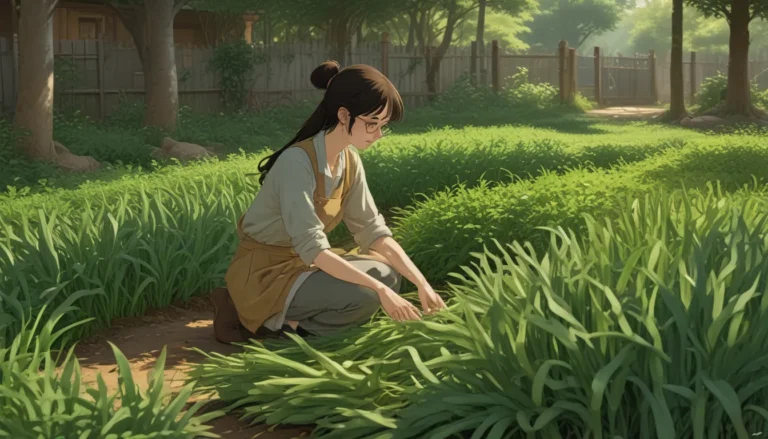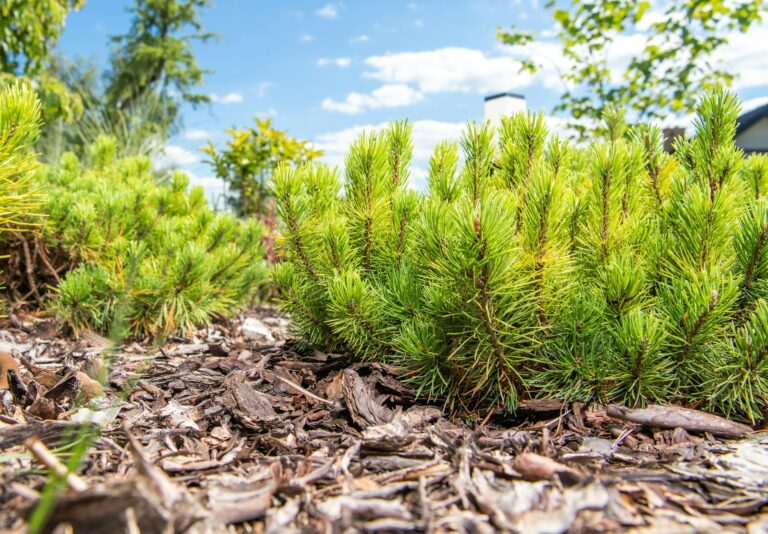A Comprehensive Guide to Cotoneaster Varieties

Are you looking to add some beauty and versatility to your garden or landscape? Look no further than cotoneaster! With its pretty spring flowers, beautiful greenery, fantastic fall colors, and bright red berries, cotoneaster is an easy and reliable performer that can add a touch of elegance to any outdoor space.
Different species of cotoneaster provide varying architectural forms, making these shrubs wonderfully adaptable throughout your garden and landscape. From creeping and prostrate types perfect for ground covers to upright species that make stunning hedges, there is a cotoneaster variety for every gardening need.
So, let’s dive into the world of cotoneaster and explore 21 of the best varieties for your garden:
Ground Covers
If you are looking for low-growing options that are perfect for ground covers, consider the following prostrate species:
1. Bearberry
Bearberry cotoneaster, also known as C. dammeri, features low, trailing stems with deep green, glossy leaves that turn reddish-purple in the fall. It is an evergreen shrub that produces a showy display of white flowers in late spring, followed by bright red berries in the fall and winter. Bearberry cotoneaster is versatile and can be used for borders, ground covers, atop retaining walls, or for soil stabilization. It is hardy in Zones 5-9.
Variety: Coral Beauty – This cultivar features lovely coral pink berries and has a mature height of 18-24 inches.
2. Cranberry
Cranberry cotoneaster, or C. apiculatus, is a low, sprawling species with fine-textured foliage and long, trailing stems. It produces pink blooms in the spring and bright red berries in the fall, with leaves turning red to burgundy in autumn. This deciduous species is suitable for cultivation in Zones 4-7.
Where to find: Plants are available in one-gallon containers at Home Depot.
3. Creeping
Creeping cotoneaster, or C. adpressus, is a compact deciduous plant with trailing stems that reach up to six feet long. It features pinky red flowers, dark red berries, and deep burgundy fall colors. This species is hardy in Zones 4-7 and is highly drought tolerant once established. It is suitable for borders, ground covers, rockeries, as well as topiary and bonsai.
Variety: Tom Thumb – This dense, dwarf cultivar is available in one-gallon containers at Nature Hills Nursery.
4. Kashmir
Kashmir cotoneaster, or C. cashmiriensis, is a compact evergreen species with dense foliage, white flowers, and dark red berries. It is hardy in Zones 5-8 and is suitable for ground covers, soil stabilization, containers, rockeries, and bonsai.
5. Littleleaf
Littleleaf cotoneaster, or C. microphyllus, is one of the smallest and slowest-growing types, with mounding evergreen foliage and dusty red berries. It is hardy in Zones 5-9 and is suitable for bonsai, containers, ground covers, rockeries, and other small spaces.
6. Tibetan
Tibetan cotoneaster, or C. conspicuus, is a densely mounding evergreen species with glossy crimson berries. It is hardy in Zones 5-9 and is suitable for ground covers, slope stabilization, and filling beds and borders.
Upright Hedge Types
For those looking for upright species suitable for hedges, barriers, foundation plantings, and windbreaks, consider the following varieties:
7. Black-Fruited
Black-fruited cotoneaster, or C. melanocarpus, is a mid-sized shrub with a rounded form and panicles of pinky-white flowers in late spring. It is extremely drought tolerant once established and produces deep purplish black berries. This deciduous shrub is suitable for Zones 3-7.
8. European
European cotoneaster, or C. integerrimus, is a deciduous species with cream flowers, rose-colored berries, and brilliant fall colors. It is a good choice for regions with cool summers and is hardy in Zones 3-6.
9. Franchet’s
Franchet’s cotoneaster, or C. franchetii, is an outstanding evergreen to semi-evergreen species with arching branches and orange-red berries. It is hardy in Zones 6-9 and makes an attractive barrier, hedge, or privacy screen.
10. Grayleaf
Grayleaf cotoneaster, or C. glaucophyllus, features small white flowers, glossy berries, and fanning branches in herringbone patterns. It is well-suited to planting as a barrier, hedge, or privacy screen, and is hardy in Zones 7-9.
11. Hedge
Hedge cotoneaster, or C. lucidus, features spreading branches and shiny, deep green leaves. It is an excellent choice for foundation plants, hedges, privacy screens, and is hardy in Zones 3-7.
Variety: Peking – This cultivar is available at Nature Hills Nursery.
12. Himalayan
Himalayan cotoneaster, or C. simonsii, is a semi-evergreen variety with pink-white flowers and scarlet berries. It is suitable for barriers, hedges, and screens in Zones 4-8.
13. Hollyberry
Hollyberry cotoneaster, or C. bullatus, is a deciduous shrub with elegant, arching stems and showy, large berries. It is hardy in Zones 5-9 and is useful for background shrubscapes and privacy screens.
14. Late
Late cotoneaster, or C. lacteus, is an evergreen specimen with milky-white flowers and red clusterberries. It is suitable for barriers, hedges, screens, and training as standards in Zones 6-9.
15. Many-Flowered
Many-flowered cotoneaster, or C. multiflorus, is a large deciduous shrub with a weeping form and bright, cerise red berries. It is a reliable choice for bank stabilization and hedges in Zones 4-8.
16. Rockspray
Rockspray cotoneaster, or C. horizontalis, is ideal for hedges and training against fences and walls. It is suitable for Zones 5-7 and is popular for bonsai and stabilizing banks.
17. Silverleaf
Silverleaf cotoneaster, or C. pannosus, is an evergreen species with silver, wooly foliage and scarlet berries. It is hardy in Zones 7-10 and makes a good choice for barriers and hedges.
18. Spreading
Spreading cotoneaster, or C. divaricatus, is a deciduous species with vibrant crimson berries and glossy green leaves. It is used for barriers, borders, hedges, and screens in Zones 4-7.
19. Tree
Tree cotoneaster, or C. frigidus, is a large deciduous shrub suitable for training into a standard tree form. It is hardy in Zones 6-9 and produces bright scarlet berries in late spring.
20. Waterer’s
Waterer’s cotoneaster, or C. x watereri, is a vigorous evergreen shrub bred by John Waterer in the UK. It is suitable for planting as privacy barriers, hedges, screens, and windbreaks in Zones 7-10.
21. Willowleaf
Willowleaf cotoneaster, or C. salicifolius, is an evergreen to semi-evergreen shrub with elegant, arching branches and lance-like leaves. It is hardy in Zones 6-8 and is suitable for borders, hedges, or screens.
From bonsai to windbreaks, cotoneaster varieties offer a wide range of uses in your garden. With multiple seasons of interest, cotoneaster is sure to add beauty and charm to your outdoor space. So, how do you use cotoneaster in your garden? Let us know in the comments below!
For more information on growing ornamental shrubs, be sure to check out these articles:
- How to Grow and Care for Butterfly Bush (Buddleia)
- The 5 Best Shrubs for Hedges High and Low
- How to Grow and Care for Boxwood Shrubs
We hope this comprehensive guide to cotoneaster varieties has inspired you to add these versatile and beautiful shrubs to your garden. Happy gardening!





